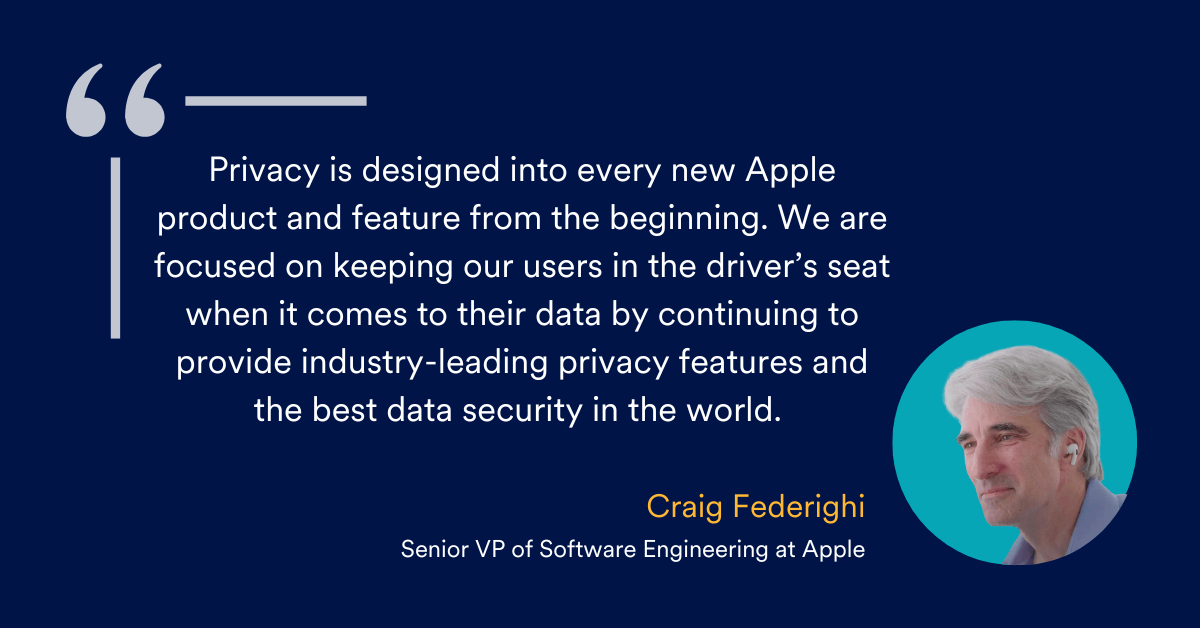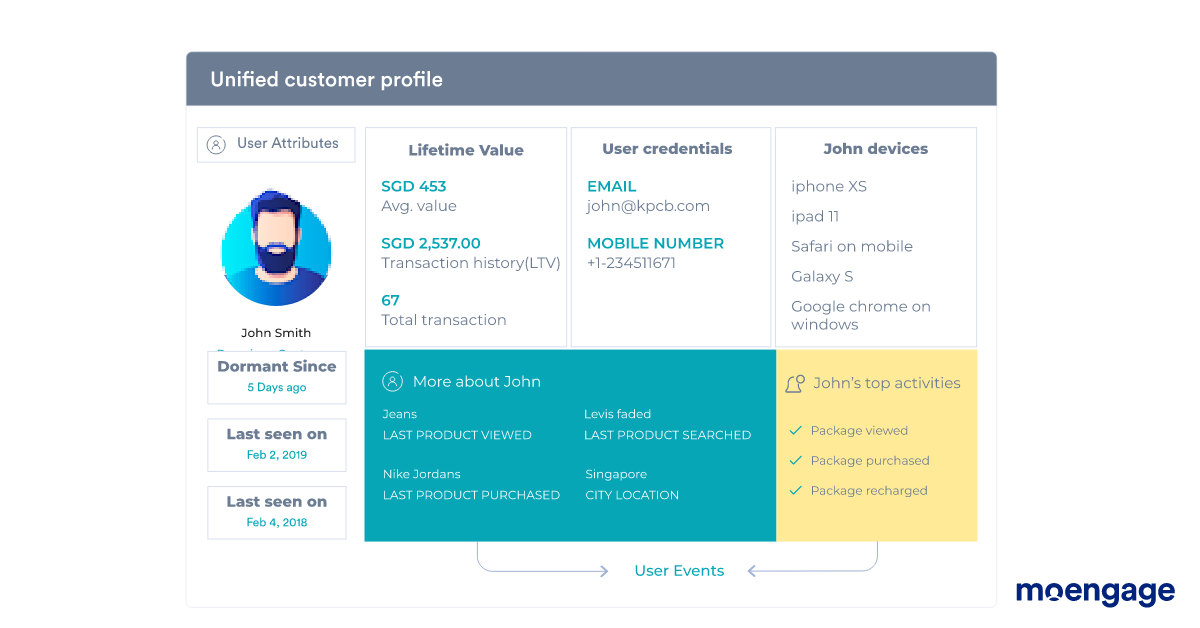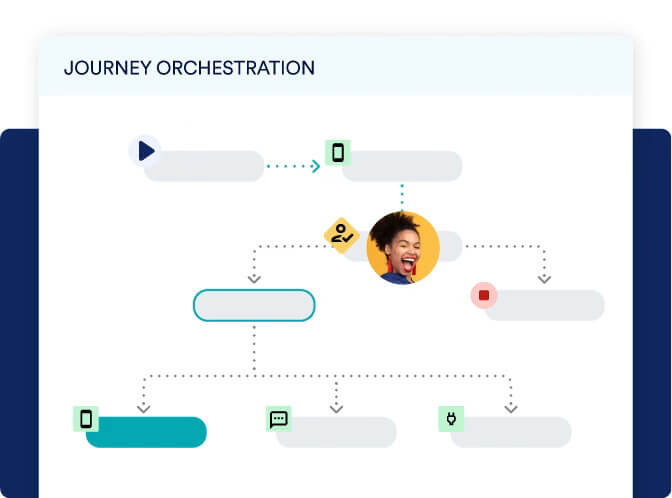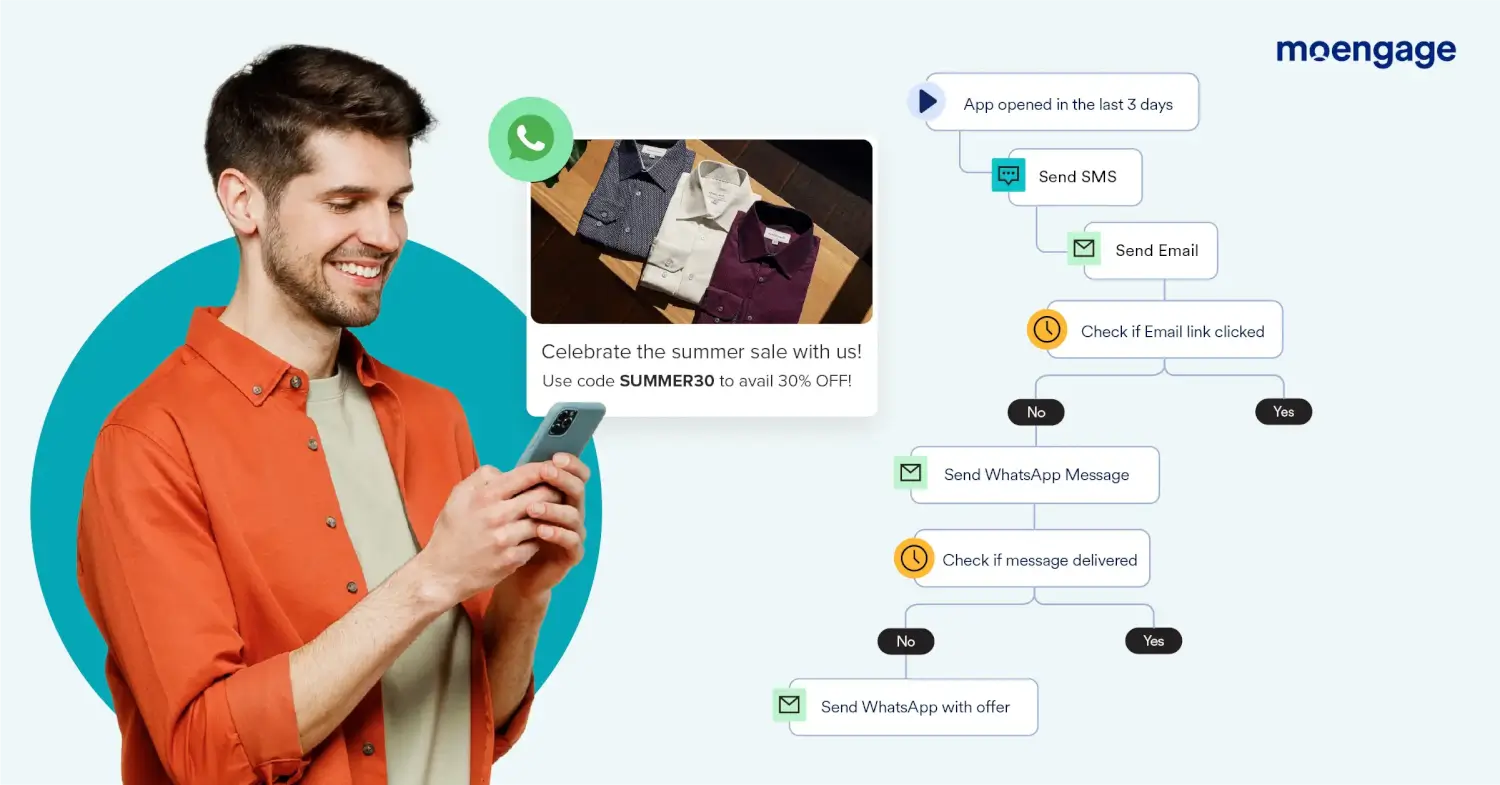Apple Introduces ‘Link Tracking Protection’ in Messages, Mail, and Safari Apps – Are You Freaking Out?
As marketers across the world are preparing for Apple’s newly announced privacy changes in iOS 17, here's a detailed guide that can help!
Reading Time: 7 minutes
As Apple continues to invest in protecting their user’s privacy, we’ve built this guide to help marketers such as yourself navigate through the latest iOS 17 announcement – Link Tracking Protection.
What is Apple’s Link Tracking Protection (LTP) in iOS 17?
One of the latest developments shaking up the marketing world is LTP, a feature designed to enhance user privacy and potentially reshape how businesses engage their customers. You can read the official announcement here.
Apple’s Link Tracking Protection is a response to growing concerns over online privacy and data security.
With advancements in tracking technologies, consumers have become more wary of how brands monitor their online activities.
Revisiting the Basics: What is Link Tracking?
Link tracking, most often used by marketers and digital advertisers, is a process of embedding unique identifiers in URLs. These identifiers help marketers and advertisers analyze customer interactions and gather insights into their behavior.
Link tracking enables marketers to measure the effectiveness of campaigns, understand customer engagement, and optimize strategies.
However, it naturally raises privacy concerns because this level of tracking enables third-party platforms to gather personal information about consumers.
Apple’s Link Tracking Protection aims to address this issue by giving iOS 17 users more control over their data.

How Does Apple LTP Work?
Apple’s Link Tracking Protection operates by anonymizing links shared via its native apps – Mail, Messages, and Safari’s Private Browsing mode.
When your customers receive an email or message containing a URL, iOS 17 will mask the original URL by replacing it with a privacy-preserving link.
After your customer clicks on the URL, Apple’s servers will immediately check if the link contains malicious content and then redirect your customer to the actual destination if it is safe.
This process prevents you from directly accessing your customer’s IP address and other identifying information.
Wojtek ran a test on Safari 17 Beta to check what tracking parameters were removed from URLs. Here’s a list of parameters that were removed and retained:
Tracking Parameters Removed |
Tracking Parameters Retained |
|
|
How Does the Launch of Apple LTP Impact MoEngage Customers?
- Your links with UTM tracking parameters will not be impacted. You can continue to analyze the performance of email, mobile push notifications, SMS, WhatsApp, and other communications channels with MoEngage’s SDK.
- First-party data like website visits, mobile app opens, browsing behavior, purchasing behavior, and more will not be impacted.
- Certain campaign information like Google Ad clicks, Facebook Ad clicks, and Instagram Ad clicks will be impacted. While you may not be able to measure the click-through performance of campaigns on these channels, you can still measure conversion and drop-off metrics for customers visiting your platform from these channels.
- Your omnichannel customer journey performance or analytics will not be impacted. You can continue to observe how customers respond to messages on different channels and run A/B tests at scale.
If you’re a MoEngage customer and want more information, you can always reach out to your favorite account manager or contact us with your query!
The Vital Connection: Respecting Privacy and Building Strong Customer Relationships
In this digital age, where online interactions shape our everyday life, the concept of data privacy and security has taken center stage.
The relationship between brands and consumers has evolved beyond transactional exchanges; it is now founded on trust, transparency, and the ethical handling of personal information.
As a marketer, you must prioritize and respect your customer’s right to privacy as a legal obligation and a fundamental cornerstone of building a trusting and lasting relationship with them.
6 Tips for Marketers to Prepare For Apple’s Link Tracking Protection

Here are six tips for you to navigate Apple’s LTP and continue engaging customers while respecting their privacy:
1. Prioritize consent and transparency
Apple’s move aligns with the broader trend of privacy-centric regulations like GDPR and CCPA.
Obtain explicit consent from customers before collecting any data and clearly communicate your data collection practices and how the information will be used.
Transparency builds trust and encourages customers to engage with your brand.
2. Leverage first-party data
Focus on collecting and utilizing first-party data directly from customers who have opted to share their information.
First-party data is more accurate and relevant than third-party data.
Leveraging first-party data effectively can lead to a better understanding of customer preferences, creating more personalized engagement efforts and improving overall customer experiences.
Here are a few examples of first-party data:
- Website/Mobile analytics: Data collected from your website or mobile app, such as pageviews, visits, time spent, bounce rates, and click-through rates. This data helps you understand behavior and gather customer preferences on your site.
- Customer profiles: Information customers provide when they create accounts on your platform. This includes name, email address, phone number, location, preferences, and demographic details.
- Purchase history: Details of products or services customers purchase or plans they subscribe to. This data can be made richer by gathering data on order frequency, average transaction value, and purchase categories.
- Omnichannel engagement: Data collected from different marketing campaigns on multiple channels such as email, SMS, website banners, physical stores, mobile push notifications, and more. This data includes open rates, click rates, unsubscribes, and conversion rates.
💡 How can MoEngage help marketers leverage first-party data?
MoEngage’s Analytics suite helps you gather insights about your customers, their journeys, and how they respond to your marketing campaigns. You can get answers to questions like: Customer insights
Journey insights
Campaign insights
|
3. Focus on the customer journey
With limited tracking insights available in iOS 17, you need to shift towards contextual marketing strategies based on the buyer stage your customer is in.
Send communication that aligns with the customer’s interests, preferences and the context in which they encounter your message.
For example, you would want to send onboarding and product discovery-related campaigns to a new customer while sending referral campaigns to a customer that has transacted at least three times on your platform.
💡 How can MoEngage help marketers build relevant and high-converting customer journeys?
MoEngage’s customer journey orchestration suite, Flows, houses multiple features that are invaluable to building personalized experiences and automating customer engagement efforts. With Flows, you can:
|
4. Revisit your attribution model
Explore alternative attribution models that don’t rely solely on tracking clicks.
Attribution models that consider broader interactions and touchpoints provide a more holistic view of campaign effectiveness.
Increase the emphasis on analytics and insights to send relevant communication. Observe your customers’ actions on your app or website, and leverage this to send contextual emails.
For example, let’s say a customer searches for “gardening accessories” in your search bar, sees a few product listings, and exits your mobile app or website. After a slight delay, you can send an email mentioning the search term in the subject line. You can also improve this further by adding the top product listings leading the customer to your mobile app or website. MoEngage customers can use a combination of Smart Recommendations and the Email Suite to send personalized emails.
5. Consider measuring new metrics
With traditional tracking metrics affected, you must consider new ways to measure success.
Metrics like engagement time, social shares, and direct interactions can provide insights into your strategy’s effectiveness without relying on tracking clicks.
6. Embrace an omnichannel strategy
Stop relying solely on email or certain platforms that will be affected by Apple’s Link Tracking Protection.
Diversify your engagement efforts across various channels like social media, SMS, mobile push notifications, website banners, in-app messages, Facebook Messenger, and WhatsApp to reach your audience effectively.
💡 How can MoEngage help marketers build a seamless and connected omnichannel experiences?
You can use MoEngage to engage customers on multiple channels and automatically personalize messages based on affinity, preferences, and engagement scores without any manual intervention. 👉 Learn more about MoEngage’s Omnichannel Engagement platform here. |
Conclusion: Apple’s Link Tracking Protection Is A Potential Game-Changer for B2C Marketers
Adaptability and creativity remain key elements for a brand’s success as the digital landscape evolves.
By prioritizing customer privacy and rethinking your strategies, you can continue to engage customers effectively while respecting their privacy preferences.
Apple’s Link Tracking Protection marks a significant shift in the B2C marketing landscape.
While LTP challenges traditional tracking methods, it allows marketers like yourself to reevaluate strategies, embrace privacy-conscious practices, and foster stronger customer relationships based on trust.
Would you like to learn how MoEngage helps you meet your engagement goals while respecting customer privacy? Check out our latest product updates here.











